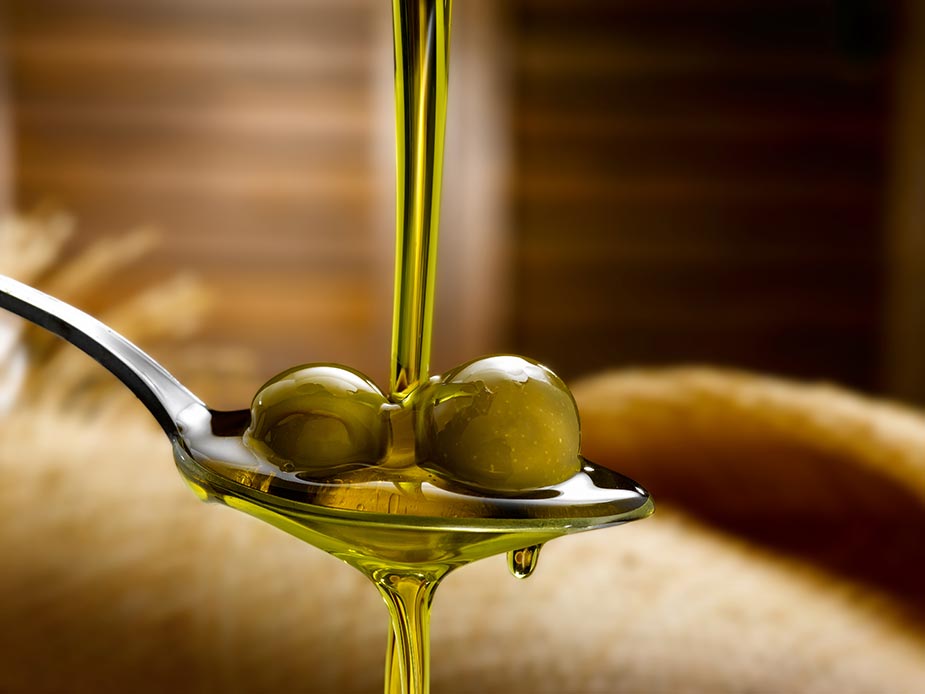Healthy, delicious, natural food that is easy to prepare and doesn’t make you gain weight, but actually makes you look younger… Isn’t that what we all want? Well, your wish has come true because the Cretan diet fulfills all of these conditions!
Natural, traditional, and local products are the hallmark of the Cretan diet, but some other facts may surprise you. For example, the traditional Cretan diet involves consuming three times more fat than the average in Western countries! And the only oil that Cretans consume is olive oil, without any thermal processing, so it is neither cooked nor fried.
Is the secret to slimness and longevity in olive oil? Maybe…
The number of olive trees exceeds the population of Crete. It is believed that the quality of olive oil is crucial to maintaining good health and preventing diseases. Unlike other oils, olive oil is rich in fatty acids that are resistant to oxidation.
Simply put, olive oil “binds” to toxic free radicals, creating a natural defense against many types of cancer. And its benefits for the heart and vascular system have long been established and confirmed.
It’s time to discard all other ways of using oil…
So, the first surprise was the use of a large amount of olive oil. The second surprise is bread. Three times more bread is consumed in the traditional Cretan diet than in the diet of Westerners. However, this is still less than in other Mediterranean regions.
And the famous Mediterranean diet is thus approaching its cousin, the Cretan diet. Cretans mainly eat whole-grain bread, except on some special occasions related to the Greek Orthodox Church: for Christmas, Easter, and name days – special white breads are made.
So, the Cretan diet is like made for those who love to eat lots of oil and bread!
But what about meat and fish?
Meat and fish are only a small part of the traditional Cretan diet and Cretan way of cooking. Food is prepared by boiling and grilling. What does a small part mean? Well, a piece of lean meat once or twice a week, fish two or three times, and that’s it…
The basis of the Cretan diet
The basis of the diet is fruit, legumes, and vegetables. Fruit is abundant in Crete and literally falls off the trees. In many parts of the island, you can pick fruit from trees all year round.
From November to April, orange trees and other citrus fruits, tangerines, grapefruits, and lemons, are full of fruit. Sweet, small orange-colored fruits, similar to nectarines, abound from March to May.
From June, markets are full of apricots, watermelons… Grapevines abound with black and white grapes, from which they make wine and sweets in August.
In September and October, figs and pomegranates are everywhere and they are given for free with drinks in some local establishments.
So, all kinds of dried and fresh legumes with vegetables and green leafy vegetables are the main foods in the diet of a traditional Cretan family, and almost every meal is served with cooked or fresh vegetables and legumes. Cretans living in villages use only fresh ingredients to prepare meals. The dishes are simple with the addition of wild herbs for flavor.
Last but not least is the liquid addition – wine. The benefits of moderate consumption of red wine are well documented, and the Cretan diet has embraced it. At least one (but more often two!) glasses of wine are a regular addition to meals. Even small children are served in small glasses.
All in all, this sounds like a great diet – lots of bread, olive oil with everything, and a glass or two of wine with every meal!

How to Follow the Cretan Diet
Interested in this diet? We’ll help you eat like they do in Crete – lose weight and improve your health! You’ll discover a new world of tasty, healthy food and Cretan ways of preparing food that will improve your quality of life and even extend your life.
Here are the basic rules for the Cretan diet:
- Use olive oil as the main fat, replacing all other fats and oils for frying and dressing.
- Drink moderate amounts of wine, usually with dinner; one or two glasses a day for men and one glass for women.
- Eat plenty of fresh fruit as a daily dessert; limit consumption of sweets that contain large amounts of sugar and saturated fats.
- Include more plant-based foods in your diet, including fruit, vegetables, bread and cereals, legumes, nuts, and seeds.
- Eat small amounts of cheese and yogurt.
- Eat small to moderate amounts of fish and poultry weekly, and limit egg consumption to a maximum of four per week.
- Include red meat occasionally, perhaps once a week.
The secret is in simplicity
The main characteristic of the Cretan diet is simplicity. There are no fancy sauces or soufflés. There are no heavy combinations or exotic spices. All you will need is a space to store food, and then simply take what you need to cook meals.
The second characteristic of the Cretan diet is the freshness and quality of the ingredients used. For example, a lot of vegetables grow by themselves in nature, and Cretans just pick them and prepare them on the same day.
Try to always use seasonal produce that grows in the region where you live. This is the tastiest and healthiest food. Products that are transported from one end of the world to the other in refrigerated trucks always lose their nutrients and taste. It is not healthy to eat food that does not grow in the region where you live, and it is very important to consider the environmental impact on the development of the taste of food that needs to travel the world before it finally reaches your table.
All in all, the Cretan diet is here to help you be healthy, slim, and beautiful in the long run! Why not try it when the preparation is so simple and the results are visible in just a few days!
The Cretan Diet – FAQ
Q: What do Cretans eat for breakfast?
A: Traditionally, Cretans eat a simple breakfast of bread, olives, cheese, and fruit. They may also have coffee or tea. In modern times, some Cretans may also have yogurt or cereal for breakfast.
Q: What are the benefits of Cretan diet?
A: Studies have shown that the Cretan diet is associated with a reduced risk of heart disease, stroke, and some cancers. It is also associated with lower levels of cholesterol and blood pressure. The diet is high in fiber, antioxidants, and monounsaturated fats, which are all beneficial for overall health.
Q: What was the Cretan diet of the 50s?
A: The Cretan diet of the 1950s was similar to the traditional diet of the island, which focused on fresh, seasonal, and local produce. The diet was high in fruits, vegetables, whole grains, legumes, nuts, and seeds, and included small amounts of meat and dairy products. Olive oil was the primary source of fat, and wine was consumed in moderation with meals.
Q: Are Cretan people healthy?
A: Studies have shown that Cretan people have lower rates of heart disease, stroke, and some cancers compared to other populations. This is believed to be due to their traditional diet, which is rich in whole foods and healthy fats. Additionally, Cretan people tend to lead active lifestyles, which also contributes to their overall health.




